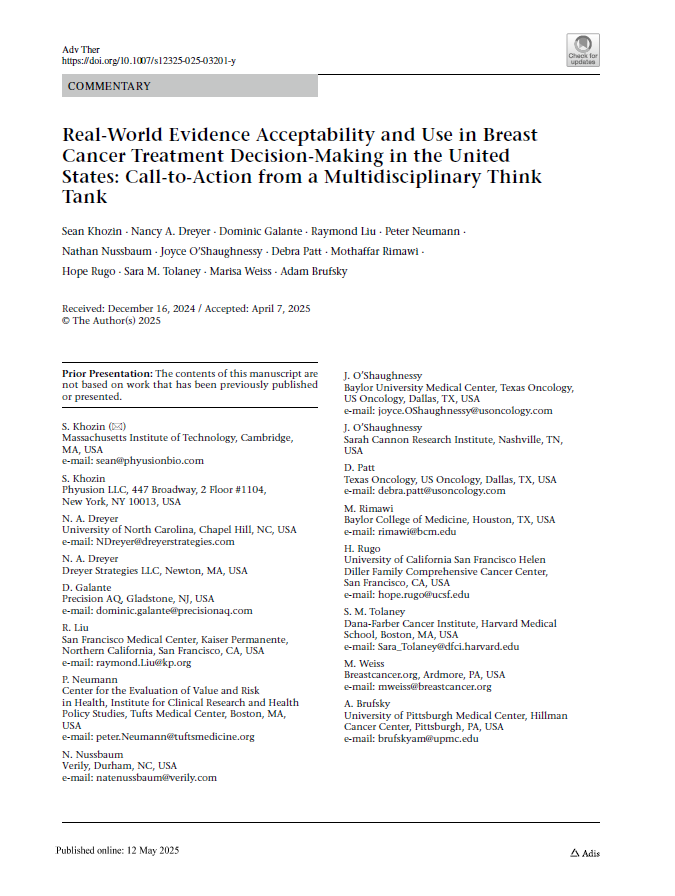
Greetings from Montreal, where this year’s annual ISPOR conference brought together the brightest minds in the field of health economics and outcomes research (HEOR). Our team was onsite to keep up with the latest advances in the field and to look towards the future. Our biopharma ecosystem increasingly relies on health economic principles to drive evidence generation and guide evaluation of—and access to—innovative therapies, and the ISPOR meeting is essential to staying “ahead of the curve.”
Top-of-mind for many at the conference was President Donald Trump’s recently announced executive order regarding Most Favored Nation (MFN) pricing, and the topic of international reference pricing in general. Health economists at ISPOR shared their thoughts regarding the intended and—perhaps most importantly—inadvertent consequences of MFN, should it become written into law:
- Confidential Discounting in Ex-US Markets: Experts noted the likelihood that manufacturers, rather than reducing prices in the US, would instead aim to increase list prices abroad as a means of complying with MFN. However, an increase in list prices could be offset by a corresponding increase in confidential discounting, which would in turn keep the actual cost of drugs in ex-US markets similar to pricing today.
- Lack of Price Transparency: Should manufacturers increasingly rely upon confidential discounting to govern price, transparency in the outcomes of pricing and access negotiations would suffer. Not only would this obscure our understanding of the relationship between value and pricing in these geographies, it would also lead to greater confusion regarding true price expectations for manufacturers choosing to launch into these markets, potentially leading to less efficient negotiations and/or delaying time-to-market.
- Fewer Launches in Ex-US Markets: Alternatively, some hypothesized whether manufacturers would be more likely to avoid launching new therapies into MFN-covered markets at all. Others wondered whether currently marketed therapies could be withdrawn due to pricing pressure. Clearly, a lack of access to innovative therapies in these geographies would negatively impact patient outcomes and quality of care overall.
While many at ISPOR were pessimistic regarding the promise of MFN pricing, there is still much to learn regarding potential implementation and coverage of the policy. The biopharma industry must monitor its implementation and anticipate the potential consequences, especially for therapies that are launching imminently in the US and ex-US markets. For more regarding MFN, check out Blue Matter’s Guidance for Evaluating MFN: Part 1 – Key Questions for Biopharma Manufacturers
Beyond international reference pricing, several other topics permeated discussions throughout the conference, including:
- Advancements in Artificial Intelligence (AI): Many discussions centered around the role of AI in supporting a variety of use cases, advancing HEOR methods (i.e., in ways that are more efficient via automation), and exploring methods for comparing and evaluating AI systems. Some topics of particular interest included the implications of agentic AI as the next step from current generative AI capabilities, as well as potential guardrails in AI adoption.
- Real World Data / Evidence Use for Decision-Making:Other sessions explored the next steps in harnessing the value of RWD and RWE to further inform healthcare decision-making, such as inclusion in regulatory submissions or economic evaluations. However, there was widespread agreement that there is a need for data standards and a deeper understanding of potential, validated / “regulatory-grade” RWD sources.
- Health Technology Assessment (HTA) Innovations: The HTA process continued to drive interest. Discussions centered around novel implementations of HTA, such as the Joint Clinical Assessment (JCA) which are in practice today, the evolution of HTA methodologies, and the increasingly complex factors that must be considered when evaluating innovative therapies in the context of the HTA process.
- Evolution of the Inflation Reduction Act (IRA): Various sessions addressed reactions to the recently published rules for the 2026 IRA negotiation process, including the addition of Part B therapies. Key topics included implementation hurdles, potential downstream effects in average sales price (ASP), and implications for manufacturers, payers and treatment sites.
- Patient-Centered Methodologies for Surrogate Endpoints in Accelerated Access: As regulatory pathways increasingly lean on surrogate endpoints to accelerate access to therapies for high-need conditions, tensions are emerging between the push for speed and the demand for robust, patient-centered evidence. A key plenary session called out that while the era of “token” patient involvement is fading, there’s still work to do. Although engagement is improving on the research side, particularly in rare diseases, it’s often lacking in regulatory, HTA, and payer settings. Frequently, post-approval monitoring is where patients are somewhat forgotten, so sustained involvement after market approval is important. Discussion also highlighted discomfort with the term “surrogate endpoint,” with suggestions that “novel endpoints” or “alternative patient outcome measures” may better capture the evolving scientific rigor and patient relevance behind these metrics. There was a conversation that endpoint development requires cross-functional work involving patients, scientists, and clinicians to ensure that concepts are relevant, measurable, and practical within clinical trials. In particular, for payer–industry collaboration, it was noted that early conversations can help guide evidence development and avoid misalignment. It was noted that payers would likely welcome more engagement upfront, pointing to “coverage with evidence development” models as one promising path.
The breadth and diversity of discussions at ISPOR demonstrate that the field of HEOR is increasingly becoming intertwined with other topics that are top-of-mind for biopharma leaders such as technology and AI, real-world evidence, and pricing and access. Biopharma companies will need to sharpen their expertise in this field to gain a precise understanding of the ways in which these “hot topics” will evolve in the coming years.








